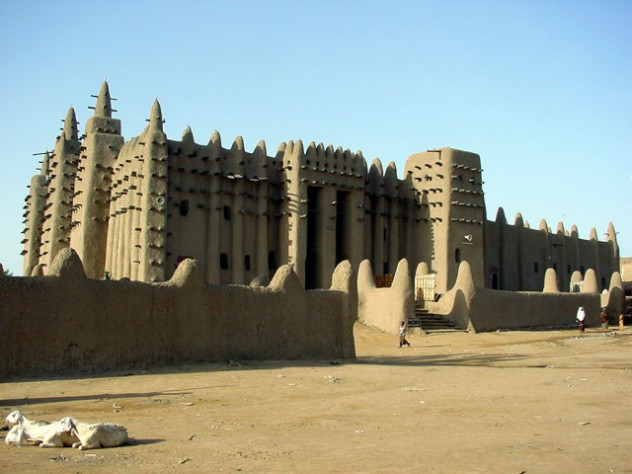10 Cities That Were the New York of Their Time
可與紐約媲美的十大古城
New York City is a world capital in every sense of the word — it’s a cultural and economic powerhouse, and arguably the most influential city on the planet. But it wasn’t always this way, as the following cities once dominated the world around them.
無論以什么標準衡量,用什么眼光來看,紐約城都堪稱世界中心。她文化深厚,經濟實力強盛,說是地球上最具影響力的城市一點也不夸張。但從前的紐約并不能高居榜首,因為以下十大古城曾傲視群城。
1. Djenne-Djenno
1.杰內(Djenne-Djenno)
In the flood lands of the Niger delta people have been building houses and other structures with clay for centuries. The town of Djenne-Djenno is made entirely out of clay. It was inhabited as far back as 250 BC, and became an important link in the trans-Saharan gold trade. Constructed on hills called “toguere,” the city managed to escape the marshy landscape and annual floods produced by the rainy season. Djenne-Djenno is believed to be one of the earliest settlements in the sub-Saharan region, and is considered by some to be “the typical African City.”
幾個世紀以來,在尼日爾三角洲的河灘上,人們一直用粘土建設房屋和其他建筑。杰內古城就是完全由粘土建成的。早在公元前250年,杰內就有人居住了,并成為跨撒哈拉黃金交易的一個重要交通樞紐。建在山上的“摩爾式”房子使得杰內成功擺脫了因雨季而造成的沼澤地形和每年的洪水。杰內被認為是撒哈拉以南地區最早的聚居地之一,更有甚者認為它是個“典型的非洲城市”。

Archeological evidence shows us a continuous human presence in the area up until the 14th century AD, when people moved to the nearby town of Djenne, founded in the 11th century. Further evidence points out that even before the city’s construction, the Bozo people were growing wild rice in the region. In the 13th century AD, with King Koumboro’s conversion to Islam, its palace transformed into a mosque.
考古證據顯示,居民于11世紀(杰內城建成后)搬遷到其附近的城鎮,并在這里生活繁衍,一直持續到14世紀。進一步的證據則指出,早在城市建成前博若人就已經在此種植野生稻了。公元13世紀,國王Koumboro皈依伊斯蘭教,宮殿也隨之被改造成一座清真寺。
This mosque stood until 1830, but was rebuilt in 1907 and is the largest mud-brick building in the world. Because clay is easily washed away during the rainy season, the Grand Mosque needs to be maintained. And so each year at the beginning of April, the people of Djenne gather for a local ritual of adding a fresh layer of mud, covering it from top to bottom.
這座清真寺一直支撐到1830年,1907年重建后成為了世界上最大的泥磚建筑。粘土在雨季很容易被沖刷掉,因此大清真寺需要悉心的維護。每年四月初,杰內人就會聚集到一起,從上到下給大清真寺加上一層新的粘土保護層。











